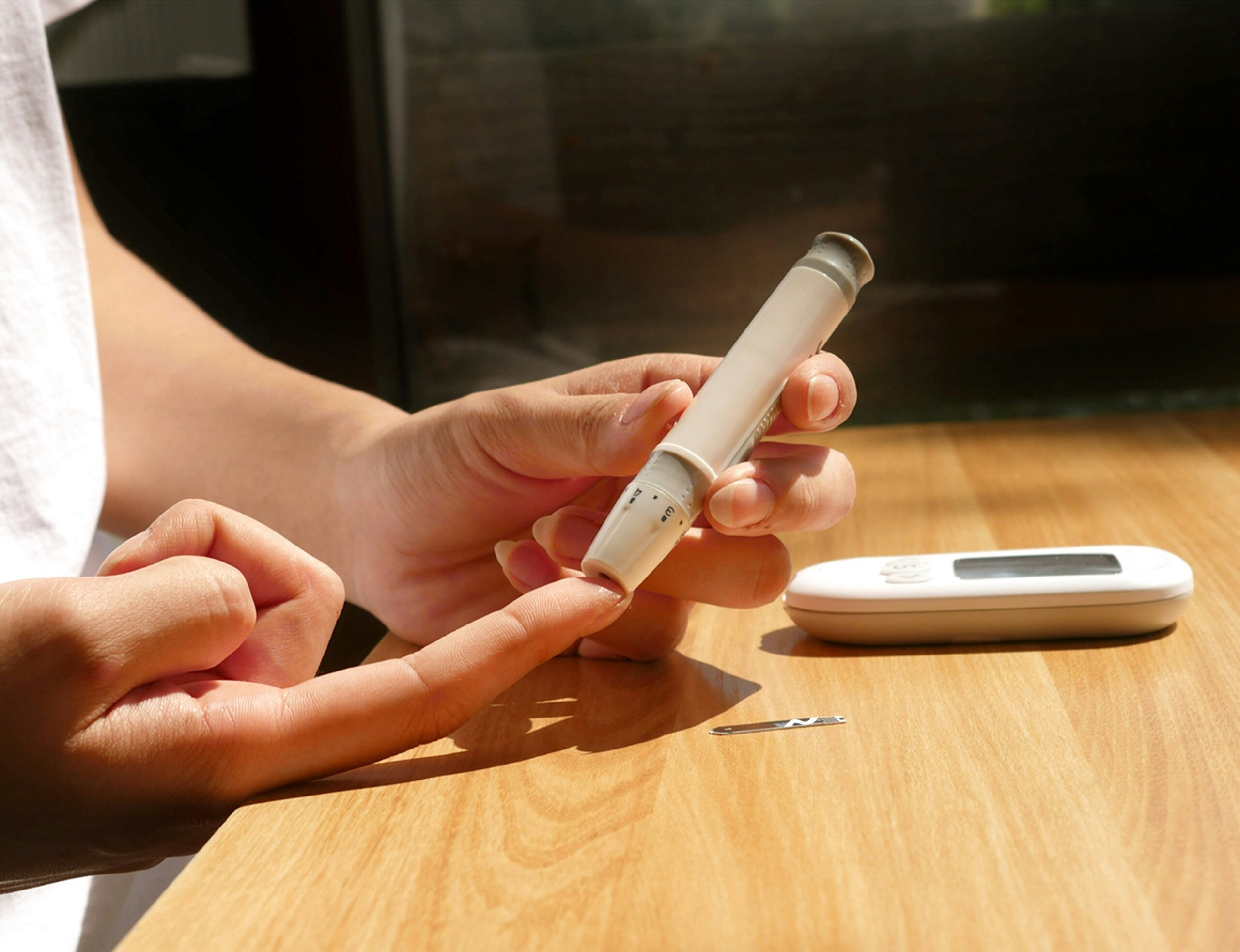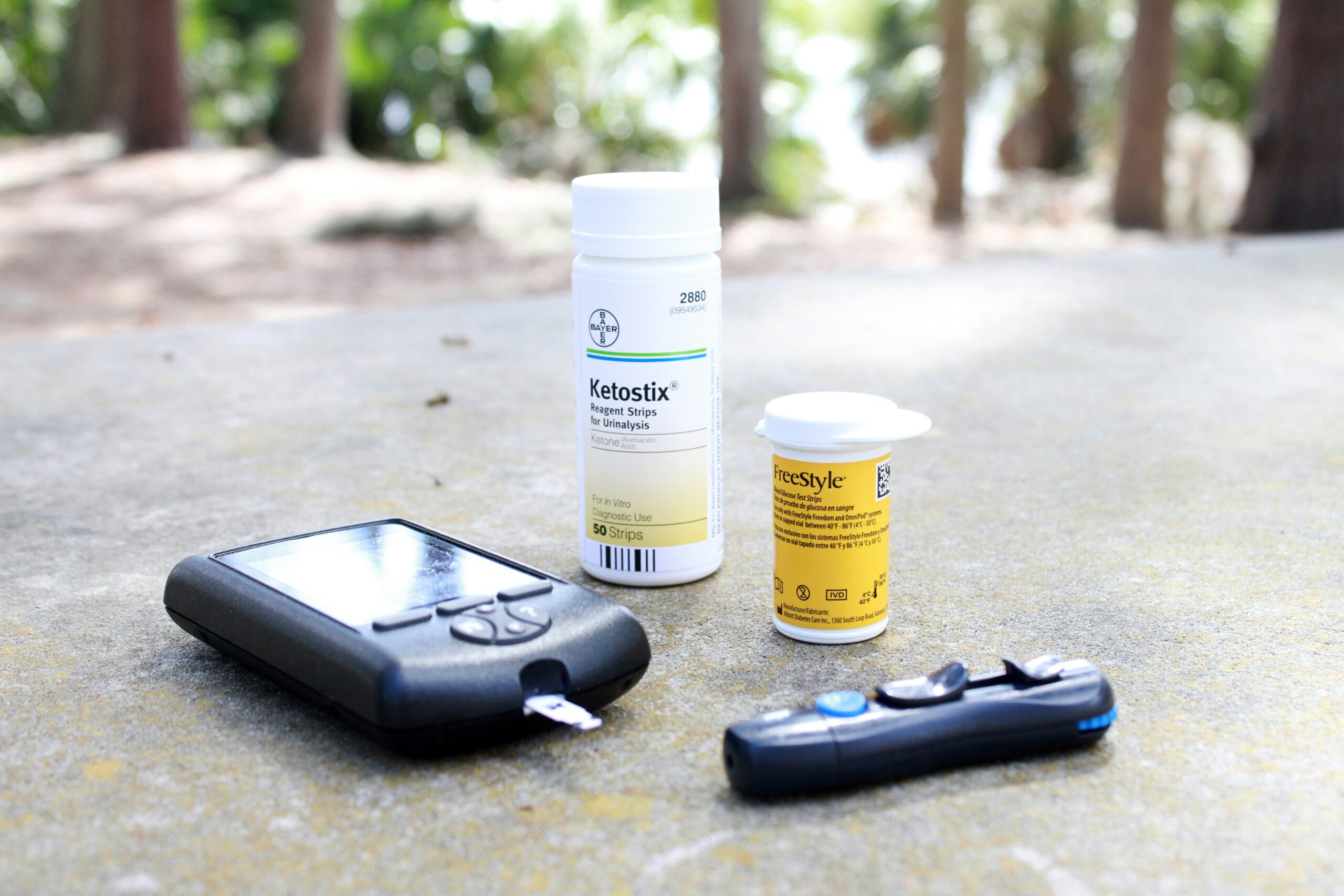Advances through diabetes research
The vital insulin
In 1921, insulin was purified by researchers Frederick Banting and Charles Best. The following year, a child with type 1 diabetes could be treated. In 1923, Insulin as a medicine came to Europe and the scientists were awarded the Nobel Prize for their amazing discovery. This led to children and young people with type 1 diabetes in particular being able to receive insulin through injections under the skin and thereby survive a previously fatal disease. Through intensive research, the quality of insulin has been improved and today insulin is produced using modern DNA technology. New analogue rapid-acting insulins and long-acting insulins have improved the ability to stabilize blood sugar levels and to reduce the risk for (sudden) severe drops in blood sugar level. Still, most adults with type 1 diabetes must take insulin injections several times a day. Today, about 90% of children and adolescents receive insulin via a thin “cannula” in the skin from a small pump the size of a slightly larger matchbox, which is attached to the buttock, abdomen, thigh or upper arm.
Since the mid-90s, there has been the possibility of continuous insulin treatment through an insulin pump, which sends out a certain amount of fast-acting insulin continuously. This has proven to be a treatment method that has significantly improved blood sugar control in diabetes and thus reduced the development of late complications in vessels and nerves. Young children in particular cope with diabetes control significantly better with an insulin pump compared to insulin injections. However, much research remains until the treatment becomes optimal. Research and development in this area is in full swing. A slightly artificial “pancreas” in which the insulin pump is connected to a continuous blood sugar meter is now being tested, in order to imitate the natural regulation of blood sugar.
Treatment in tablet form
People with type 2 diabetes can produce their own insulin, but the amount of insulin produced is still too small, and comes too late to get good blood sugar levels when they eat. In addition, they respond less well to insulin so that fasting blood sugar also becomes too high. Until the 1950s, there was only dietary treatment. Since the early 1950s, type 2 diabetics have been treated, in addition to lifestyle advice such as exercise and a good diet, with medicines in tablet form, which increase their own insulin production independent of meals or make their own insulin work better (Metformin). However, this is not enough to achieve good sugar control and reduce the risk of sequelae in many people with type 2 diabetes. But the new medications of the last 15 years such as GLP-1 receptor agonists (GLP1RA), GLP-1 protease inhibitors and SGLT2 inhibitors mean new opportunities to improve blood sugar levels by stimulating insulin release only at meal time, to affect insulin sensitivity (glitazones) and to increase sugar excretion in the urine and thereby reducing the risk of sequelae. Large studies have shown that especially GLP1RA and SGLT2 inhibitors reduce the risk of serious cardiovascular disease and kidney disease, even independent of blood sugar, probably partly via reduced oxidative stress. They are therefore also recommended for patients who do not have diabetes. New medications have also been developed against severe obesity, which is often a triggering factor for type 2 diabetes. Research is ongoing regarding more individualized medicine.
Self-testing blood sugar levels
Since the mid-1980s, simple methods where patients themselves test their blood sugar have significantly increased the possibilities of improving sugar control and thus reducing the risk of complications from diabetes. There are now small blood sugar meters that can be attached to the arm or stomach in order to be able to continuously measure blood sugar level in the tissue and thereby increase the possibilities of further improving sugar control.
Frequent eye check-ups and laser against blindness
Frequent eye check-ups have led to people with diabetes and macular changes being able to be treated in time and thus avoid blindness. Laser treatment has had a decisive importance. New drugs are being developed to prevent serious eye damage.
Blood pressure treatment
New blood pressure treatment that is given early in the case of leakage of egg white in the urine in diabetes patients has significantly reduced severe kidney failure and thus the need for a kidney transplant.
Cardiovascular disease such as heart attack and heart failure has also decreased significantly. Combination treatment with better blood sugar, better blood pressure and better blood fats and smoking cessation has more than halved dangerous cardiovascular incidents.
New treatments reduce amputations
New treatment methods to improve circulation in feet, as well as the formation of diabetes foot teams, have reduced the number of amputations by more than half. Research is ongoing to improve and accelerate wound healing, which today often takes several months to years. Treatment with oxygen in pressure chambers is an example of successful research.
Transplantations
Kidney transplantation in case of kidney failure has extended the life of many diabetes patients with severe kidney damage by many years. Transplantation of beta cells or parts of the pancreas has become an opportunity to regain natural insulin production by patients with type 1 diabetes. This requires access to transplant organs and methods to inhibit the body’s rejection process. Intensive research is ongoing.
Stem cell research
Stem cell research has raised hopes of being able to cure diabetes in the future and to be able to replace transplants.
Prevention of diabetes
Research is underway to detect in time those who are at risk of developing type 1 diabetes and prevent the disease with, for example, vaccines or antibody treatment. Research is also underway to detect in time those who are at risk of developing type 2 diabetes for preventing it.
Gestational diabetes
Pregnancy means a much increased insulin resistance from the third month. Those who have a predisposition to type 2 diabetes can then get gestational diabetes, which disappears when the child is born, but there is a high risk of developing diabetes for the mother within 10-15 years, especially if you gain weight. In Sweden, those with gestational diabetes receive good care with close to normal blood sugar, which results in healthy, normal-weight babies and reduces complications for the pregnant woman.
Diabetes epidemic
Today, approximately 6% in Sweden and 10.5% of the world’s adult population have diabetes, especially type 2 diabetes, and it continues to increase. Type 1 diabetes is increasing in developing countries. Type 1 diabetes is increasing among young children in Sweden. Approximately 1,000 children and more than 1,000 adults contract type 1 diabetes annually.
Today’s research
Today’s research strives to fulfill the following wishes of those who have diabetes:
- to be cured of diabetes
- to avoid complications
- to live a normal life (with normal life span and normal life quality) without disturbing fluctuations in blood sugar.



Photos from Unsplash.com
Is it possible to cure type 2 diabetes?
Pioneering studies show that, through weight loss, it is possible for some people who have suffered from type 2 diabetes for many years to regain normal blood sugar levels without medicines, i.e. to put their diabetes into remission.
“I’ve had patients who got completely normal values after weight loss and stayed there for 20 years,” says Professor Kerstin Brismar.
Read more about remission in an interview with Professor Brismar in the article Remission of type 2 diabetes, published in the Swedish Diabetes Association’s Journal Allt om Diabetes No. 2 2023 (OBS: In Swedish).
